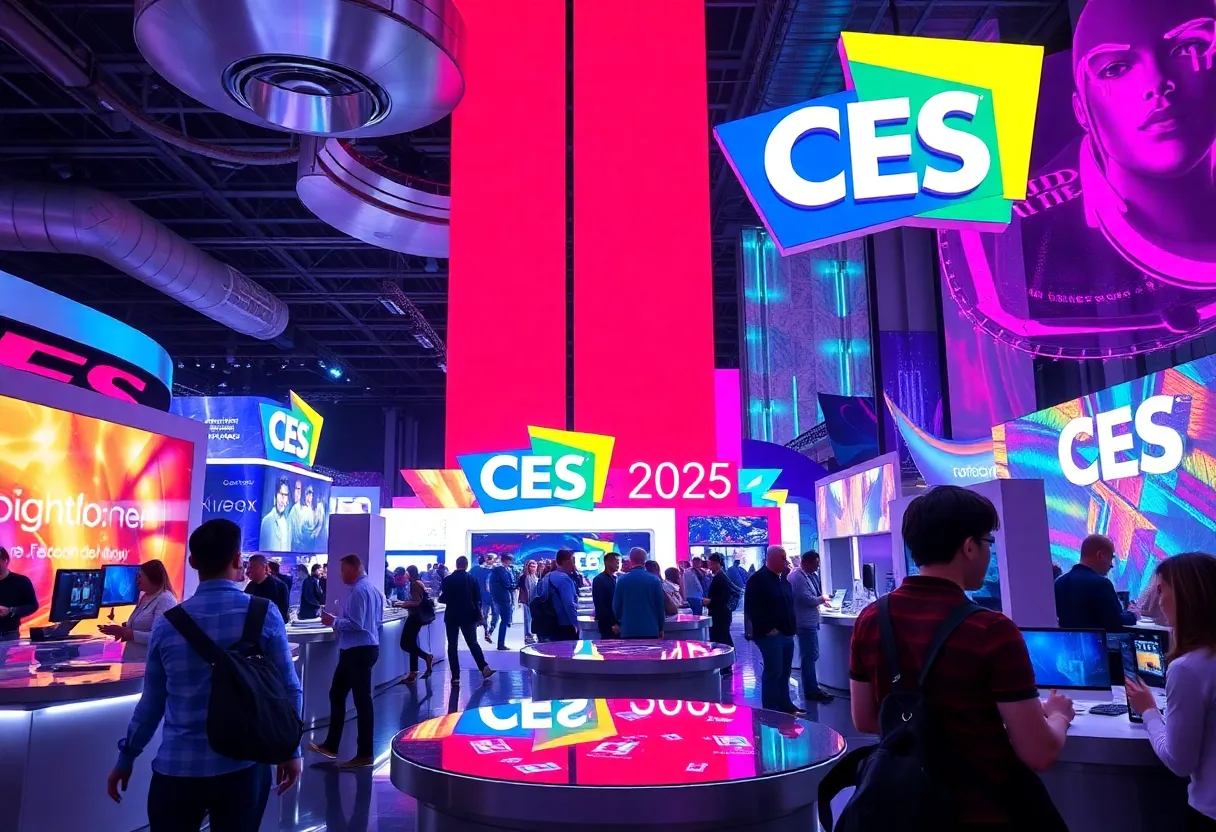

Attendees at CES 2025 engaging with innovative consumer technologies.
Article Sponsored by:
Real Internet Sales is a digital marketing agency located in Columbia, South Carolina. We specialize in website design and development, SEO, social media management, online advertising, AI integration, and workflow automation. Our services also include affiliate marketing and digital strategy.
Real Internet Sales also offer specialized programming for real estate firms, using IDX and RETS feeds to automatically populate MLS properties on their websites for improved property listings and sales. We also work with clients in the restaurant, tourism, and e-commerce industries to enhance their digital presence and streamline operations.
As CES 2025 approaches, Joel Lunenfeld, CEO of Publicis Media Exchange, discusses the evolving landscape of media buying, focusing on the importance of influencer marketing, programmatic investments, and technology integration. He emphasizes the role of artificial intelligence and augmented reality in shaping consumer engagement strategies, alongside understanding clients’ financial structures to enhance media effectiveness.
As we gear up for CES 2025 in Las Vegas, the buzz surrounding emerging consumer technologies is palpable. This year’s event promises to showcase innovations that could dramatically change how brands engage with consumers. Recently, Joel Lunenfeld, the CEO of Publicis Media Exchange (PMX) in North America, shared some insights into what we might expect and the shifting landscape of media buying.
Lunenfeld, who returned to Publicis earlier this year after a stint at Twitter, highlights the need for agencies to adapt and evolve. One notable trend is the way influencer marketing is refocusing. It is no longer merely a standalone tactic; rather, it is transitioning to becoming a strategic channel for clients. Lunenfeld pointed out how the acquisition of the influencer agency Influential has enhanced their capabilities to identify creators who genuinely connect brands with consumers.
Another critical shift is in the realm of programmatic investments. Lunenfeld advises that agencies should pivot from passive targeting strategies to something far more proactive: focused supply path optimization. This approach, he believes, will allow clients to reach their audiences more efficiently in a rapidly changing environment.
So, what’s on PMX’s agenda for 2025? According to Lunenfeld, the key focus areas will include client satisfaction, the integration of technology, and diversifying capabilities. The team is particularly excited about developing proprietary technologies such as PMX Lift, influenced by their partnership with Epsilon’s identity and technology.
In an age where artificial intelligence (AI) is stepping into the spotlight, PMX is prioritizing its integration into campaigns and media strategies. Lunenfeld notes that AI’s presence is fundamentally shifting how consumer technology sectors operate. From data analysis to campaign enhancements, understanding how to leverage AI will be crucial for future success.
Adding to the technological advancements, a recent collaboration between Wpromote, Snapchat, and Lumen Research revealed that augmented reality (AR) significantly boosts campaign effectiveness and captures consumer attention. As brands continue to seek innovative ways to connect with their audiences, these insights from CES will likely influence strategies moving forward.
Meanwhile, in a significant development, Omnicom Media Group announced a partnership with Amazon Ads and Flywheel allowing them access to five years of consumer purchase data. This deal is set to enhance targeted advertising strategies based on long-term consumer behavior, integrating insights into Omnicom’s operating platform, Omni. This move highlights the growing importance of data in refining media buying strategies.
Lunenfeld also mentions that it is crucial for agencies to comprehend their clients’ financial structures to maximize media effectiveness. As attendees at the recent Digiday Media Buying Summit have likely discovered, building relationships and connectivity remain vital. The challenges faced by media agencies—especially regarding multi-stakeholder clients—require a delicate balance of differing objectives as they navigate the complex realm of media buying.
The advertising industry is also navigating the complexities introduced by the growing role of AI. There are pressing questions regarding the role agencies play and how holding companies may need to adjust to this transformation. Consider, for instance, Omnicom’s proposed acquisition of IPG, a move that could birth the largest agency-holding company in the world with a staggering $25 billion in annual revenue. However, skepticism lingers about merger execution and historical integration issues.
Ultimately, clear communication and transparency between agencies and clients will be essential to optimizing media strategies and evaluating performance effectively. The road ahead may be filled with challenges, but by embracing technology and fostering collaboration, the advertising industry is poised for exciting times ahead!
Jasper Launches No-Code AI App Builder for Marketers
James Foster Takes the Helm of Global Marketing at Hugo Boss
West Michigan’s Infrastructure Development Surge in 2025
Fresh Insights into Social Media Trends Influencing Marketing Strategies for 2025
The Rising Importance of Mobile Marketing Automation Platforms for Business Success in 2024
The Rise of B2B SaaS Marketing in 2024
Construction Industry Faces Workforce Challenges Amid Growth
Michigan Wolverines Lose Promising Freshman Owen Wafle to Transfer Portal, Triggering Player Retention Concerns
6 New Laws Now Effective in Michigan in 2025: Covering Employment, Education, Organ Donation, Unemployment Benefits, Animal Welfare, and Wage Hike
Six New Laws in Michigan Effective 2025: Key Highlights from Workers’ Rights to School Safety Regulations

7001 St Andrews Rd #329 ,
Columbia, SC 29212,
United States
Phone: (+1) 803 708 5514
News Summary A 22-year-old man from Northville Township has been arrested after allegedly kidnapping and…
News Summary The recent death of Duchess, a dog found dead in Rouge Park, has…
News Summary Cooper-Standard Holdings Inc. has announced a net income of $1.6 million for the…
News Summary The North Lake Correctional Facility in Baldwin, Michigan, is set to reopen as…
News Summary Leonard’s Syrups has successfully acquired Midwest Juice as part of its strategy to…
News Summary Michigan Attorney General Dana Nessel has announced significant changes to the state's Uniform…